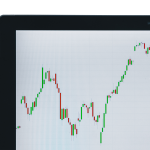Personalized retail to drive AI solutions spend

Whatever your stance on artificial intelligence (AI) technology— excited by the opportunities, irritated by the airtime, or somewhere in between— it’s certainly attracting a deep trance of investment.
AI encompasses a broad sweep of categorizations and uses, but fundamentally it comprises computer systems able to perform tasks normally requiring human intelligence, and that can include anything from facial recognition, speech recognition, decision-making, and translation, amid a mass of other possibilities.
It’s this potential that’s led to the IDC (International Data Corporation) to predict worldwide spending on AI systems could reach US$35.8 billion in 2019, representing a massive 44 percent uptake on last year. That figure is expected to double by 2022, hitting a total US$79.2 billion with a CAGR of 38 percent over the next three years.
According to the IDC is the increasingly tech-driven retail sector that will be the biggest spender. Companies here will be expected to invest US$5.9 billion this year in efforts to push potential buyers over the line and foster the loyalty of their existing customers.
Personalization of shopping services will be the driver of the technology’s adoption here— AI services will power automated customer service agents and expert shopping advisors, as well as product recommendations based around a consumer’s singular preferences.
Unsurprisingly, the banking sector is tipped to be the second biggest worldwide spender on AI services. The finance industry has been one of the earliest and biggest investors of RPA (Robotic Process Automation) software, allowing for the automation of many of the industry’s admin-heavy tasks and minimizing the risk and subsequent impact of human error.
However, the IDC says the sector’s wider AI spend— a predicted US$5.6 billion in total— will largely be directed at security, including threat intelligence & prevention systems, and fraud analysis & investigations systems.
Discrete manufacturing, healthcare providers and process manufacturing will complete the top five industries for AI systems spending this year.
AI over everything
Marianne Daquila, Research Manager of Customer Insights and Analysis at IDC, said that significant spend can now be seen within every industry as AI initiatives continue to optimize operations, transform the customer experience and create new products and services.
She cites use cases such as intelligent process automation, expert shopping advisors, product recommendations and pharmaceutical research & discovery exceeding the average five-year compound annual growth rate of 38 percent.
Overall, the AI use cases that will see the most investment this year are automated customer service agents (US$4.5 billion worldwide), sales process recommendation and automation ($2.7 billion), and automated threat intelligence and prevention systems (US$2.7 billion).
Five other use cases will see spending levels greater than US$2 billion in 2019: automated preventative maintenance, diagnosis and treatment systems, fraud analysis and investigation, intelligent process automation, and program advisors and recommendation systems.
Software will be the largest area of AI systems spending in 2019 with nearly US$13.5 billion going toward AI applications and AI software platforms.
AI applications will be the fastest growing category of AI spending with a five-year CAGR of 47.3 percent. Hardware spending, dominated by servers, will be US$12.7 billion this year as companies continue to build out the infrastructure necessary to support AI systems.
Companies will also invest in IT services to help with the development and implementation of their AI systems and business services such as consulting and horizontal business process outsourcing related to these systems.
YOU MIGHT LIKE

Do business leaders need to talk about AI?
“IDC is seeing that spending on both AI software platforms and AI applications are continuing to trend upwards and the types and varieties of use cases are also expanding,” said David Schubmehl, Research Director of Cognitive Artificial Intelligence Systems at IDC.
“While organizations see continuing challenges with staffing, data, and other issues deploying AI solutions, they are finding that they can help to significantly improve the bottom line of their enterprises by reducing costs, improving revenue, and providing better, faster access to information thereby improving decision making.”
On a geographic basis, the United States will deliver nearly two-thirds of all spending on AI systems in 2019, led by the retail and banking industries.
Western Europe will be the second largest region in 2018, led by banking, retail, and discrete manufacturing. The strongest spending growth over the five-year forecast will be in Japan (58.9% CAGR) and Asia/Pacific (excluding Japan and China) (51.4% CAGR). China will also experience strong spending growth throughout the forecast (49.6% CAGR).
“AI is a big topic in Europe, it’s here and it’s set to stay,” said Andrea Minonne, senior research analyst, IDC Customer Insight & Analysis in Europe. “Both AI adoption and spending are picking up fast. European businesses are hands-on AI and have moved from an explorative phase to the implementation stage.”
AI is the game changer in a highly competitive environment, especially across customer-facing industries such as retail and finance, where AI has the power to push customer experience to the next level with virtual assistants, product recommendations, or visual searches.
Many European retailers such as Sephora, ASOS, and Zara or banks such as NatWest and HSBC are already experiencing the benefits of AI, including increased store visits, higher revenues, reduced costs, and more pleasant and personalized customer journeys.
“Industry-specific use cases related to automation of processes are becoming mainstream and the focus is set to shift towards next-generation use of AI for personalization or predictive purposes,” said Minonne.









